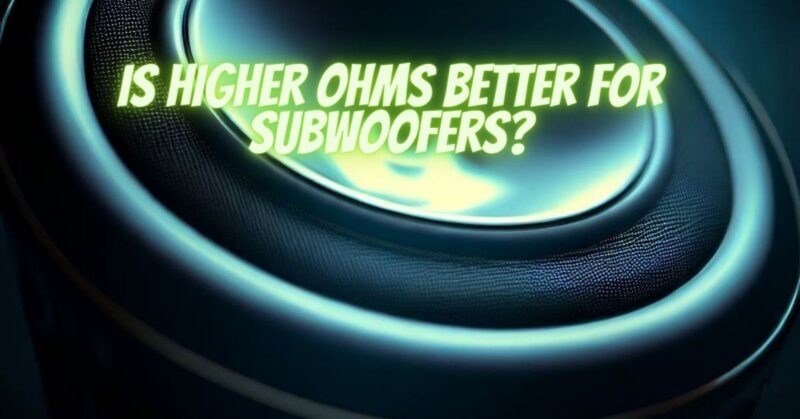The world of audio enthusiasts is often rife with debates and misconceptions, and one topic that frequently sparks discussion is whether higher impedance (measured in ohms) is better for subwoofers. Impedance is a key factor in determining how subwoofers interact with amplifiers, but the idea that higher ohms are inherently superior warrants a closer look. In this article, we’ll examine the truth behind this notion and explore the implications of subwoofer impedance on audio systems.
Understanding Impedance
Impedance, in the context of audio systems, is the total opposition that a speaker presents to the flow of alternating current (AC) from an amplifier. It’s influenced by both the resistance and reactance of the speaker’s voice coil. The most common impedance values for subwoofers are 2, 4, and 8 ohms.
Power Delivery and Efficiency
One of the arguments in favor of higher impedance subwoofers is that they draw less current from the amplifier, resulting in reduced stress on the amplifier and potentially more efficient power delivery. While this notion holds some truth, it’s important to note that the efficiency gains might not always be substantial.
Modern amplifiers are designed to handle a variety of impedance loads. They often have circuitry to adapt to different impedance levels while maintaining stable performance. Therefore, while higher impedance subwoofers might draw less current, the efficiency gains might not be significantly noticeable in practical listening scenarios.
Power Output and Sound Quality
Another claim is that higher impedance subwoofers allow for higher power output and better sound quality. It’s true that lower impedance speakers (such as 2 ohms) can demand more current from the amplifier, potentially resulting in higher power output. However, this doesn’t inherently translate to better sound quality.
Sound quality is influenced by a multitude of factors, including driver design, enclosure type, crossover settings, and room acoustics. While higher power output might provide a potential advantage, it doesn’t guarantee improved sound quality on its own. Other aspects of the speaker’s construction and the overall audio setup play equally significant roles.
Matching Impedance to Amplifiers
It’s important to debunk the misconception that higher impedance subwoofers are universally better. The ideal impedance for a subwoofer largely depends on the amplifier or receiver’s specifications. Amplifiers are often designed to work optimally within specific impedance ranges. Using a subwoofer with an impedance significantly different from what the amplifier is designed for could lead to suboptimal performance and even potential damage to the equipment.
Consulting the specifications of both the amplifier and the subwoofer is crucial when it comes to impedance matching. An impedance that’s too high or too low could result in power loss, distortion, or even overheating issues.
The notion that higher ohms are inherently better for subwoofers is a misconception that needs to be addressed. While higher impedance subwoofers might offer certain advantages in terms of potential power efficiency and reduced amplifier stress, these benefits are often subtle and might not translate to significantly improved sound quality.
The key to a successful audio system lies in a well-balanced approach. Consider factors such as amplifier compatibility, intended usage, and overall system design when choosing subwoofer impedance. Remember that sound quality is a result of various elements working in harmony, and a higher impedance alone won’t guarantee audio nirvana. Prioritize proper impedance matching, and focus on the holistic design of your audio setup to achieve the best possible listening experience.


